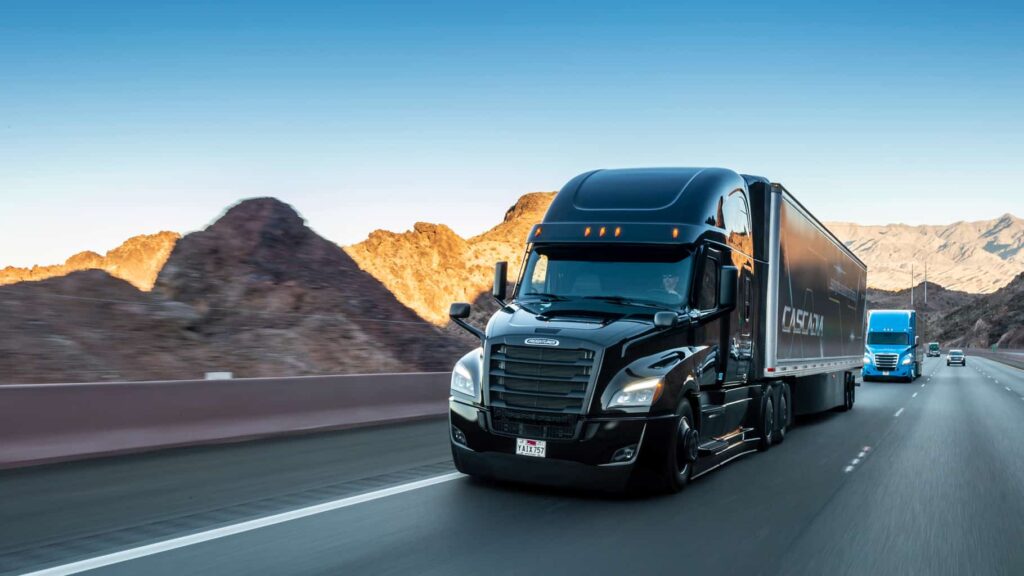Ohio and Indiana have made a joint decision to conduct trials of semi-automated trucks on a 166-mile section of Interstate 70 connecting Columbus, Ohio, and Indianapolis. This test is expected to commence around October.
The initiative is being carried out by the Ohio Department of Transportation and DriveOhio, which is an organization under the Ohio government, dedicated to improving “smart mobility technology.” The plan entails a four-year project with a budget of $8 million to introduce partially automated semi-trucks on the roads of both states.
It’s important to note that these trucks are not fully autonomous or self-driving vehicles, as confirmed by a DriveOhio director.
“A professional driver will be always at the wheel in each vehicle, so the term ‘self-driving’ is not accurate,” said Breanna Badanes, managing director of communication and policy for DriveOhio. “These vehicles cannot drive themselves.”
The objective of this project is to progress truck automation within the logistics industry by incorporating these technologies into the everyday freight-hauling operations of truck fleets, as stated by Badanes on July 26.
The project is a collaborative effort involving ODOT, DriveOhio, the Indiana Department of Transportation, and the Transportation Research Center Inc.
While the earliest testing phase is anticipated to take place in the upcoming fall, Badanes acknowledged that there’s a possibility of it being delayed until the spring of 2024.
“I also want to be clear that this project is driven by safety,” she added. “This technology has the potential to maximize safe operation and reduce the likelihood of collisions as well as making the job easier for truck drivers. We aim to test varying levels of automation, all of which still require a human driver at the wheel.”
According to Kevin Burch, who serves as the vice president of governmental affairs and sales at Martin Transportation Systems, the notion of automated or autonomous vehicles receives a diverse range of responses within the trucking industry.
Burch explained that there is a prevalent sentiment that the potential adoption of this technology poses a significant challenge in terms of recruiting new personnel for the industry. In other words, there are concerns that the introduction of automated trucks might deter people from pursuing trucking careers due to fears of job displacement or changes in job requirements.
“Who wants to put the time and effort into getting a CDL if in fact it’s going to be driverless?” he said.
Kevin Burch holds the belief that trucking technology, in some form or another, is likely to become inevitable in the industry. This could range from more subtle “driver’s assist” features to complete control of trucks by computers.
However, Burch emphasized that achieving full autonomy is a distant prospect and could take many years to become a reality. There are various factors contributing to this complexity, including costs, public opinion, and unanswered questions about how autonomous trucks would navigate through challenging areas like heavy construction zones.
In conclusion, Burch acknowledges that the integration of such advanced technology into the trucking industry is a complex process with numerous challenges and uncertainties.
Norita Taylor, who serves as a spokeswoman for the Owner-Operator Independent Drivers Association, stated that the truckers her organization represents hold certain apprehensions regarding autonomous or partially autonomous vehicles.
As the voice of independent drivers, the association members likely have concerns about how these technological advancements may impact their livelihoods, job security, and overall safety on the roads. It’s not uncommon for drivers to have reservations about the potential changes and implications that autonomous technology might bring to the trucking industry.
“We think that common sense dictates that smaller vehicles should be perfected before allowing autonomous trucks,” Taylor said.
Ohio is not a stranger to this type of technology.
Back in 2016, a semi-truck underwent testing on U.S. Route 33, running between Columbus and East Liberty. During these tests, the driver seated in the front had their hands off the steering wheel. These trucks are similar to cars in that they utilize sensors and radar for their operation.
More recently, in January, DriveOhio announced that “automated vehicles” would soon be seen on rural roads in central and southeast Ohio.
According to DriveOhio’s statement in January, automated vehicle technology is causing a significant transformation in the transportation industry, influencing how goods are moved and how people travel.





